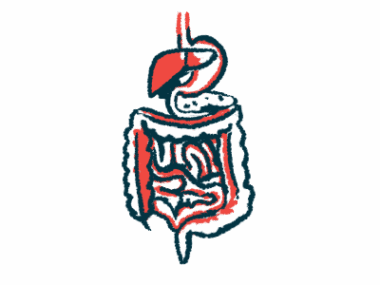Woman develops CAD secondary to thyroid cancer: Case report
Rare case shows CAD may indicate underlying malignancy
Written by |

A 50-year-old woman developed cold agglutinin disease (CAD) secondary to two different types of cancer within the thyroid gland, a study reported.
The surgical removal of the thyroid gland successfully treated both the cancer and CAD.
While CAD has been reported to occur secondary to blood cancers, it is rarely associated with solid tumors.
“The association between CAD and solid tumours underscores the importance of comprehensive cancer screening in affected patients,” the researchers wrote.
The case report, “Cold Agglutinin Disease: A Rare Paraneoplastic Manifestation of a Thyroid Malignancy,” was published in Cureus.
Immune response and cancer
CAD is a form of autoimmune hemolytic anemia (AIHA), a group of rare autoimmune diseases marked by the production of self-reactive antibodies against red blood cells. As a result, tissues do not receive enough oxygen, which can lead to symptoms including fatigue and pain.
AIHA can be classified as CAD, warm AIHA, or mixed AIHA depending on whether the antibodies bind more easily to red blood cells at lower temperatures — known as cold agglutinins — or higher temperatures. The mixed form has both antibody types.
CAD is called primary when its cause is unknown, or secondary when it occurs with an underlying condition, generally an infection, another autoimmune disease, or a blood cancer.
When cells in the body become cancerous, the immune system targets and kills them by producing antibodies against the proteins they produce. However, some of these proteins also are made by healthy cells, meaning that sometimes the antibodies produced against cancer may also attack certain healthy cells in the body.
Diseases and manifestations triggered by the body’s immune response against cancer are called paraneoplastic syndromes.
AIHA is “a well-defined paraneoplastic phenomenon” associated with blood cancers, the researchers wrote. “Rarely, they can occur in solid tumour malignancies,” they added.
Woman in India is rare case
The researchers in India described the case of a 50-year-old woman with CAD secondary to mixed-histology thyroid cancer. Mixed histology means different types of cancer cells were found in her thyroid gland, located in the neck.
She arrived at the hospital after experiencing a fever, yellowing of the whites of the eyes, abdominal pain, and dark urine for about two weeks. She also had shortness of breath upon physical effort, generalized body weakness, and fatigue.
She was pale, her skin and the whites of her eyes were yellow, and her liver and spleen were enlarged. She also had a firm swelling in the thyroid area. When blood was drawn, it clotted immediately, which was an “important finding,” the team wrote. Binding of cold agglutinins to red blood cells causes them to aggregate.
Blood tests revealed signs of anemia, including low red blood cell counts and low levels of hemoglobin, the protein that carries oxygen in red blood cells. The woman also had higher blood levels of markers of liver damage and red blood cell destruction, or hemolysis. These included bilirubin, a yellow pigment that forms when red blood cells are destroyed, which explained her yellowish color.
Tests for certain virus and other infectious agents, as well as certain autoimmune conditions, came back negative.
Blood smear analysis, in which a small amount of blood is smeared on a glass slide and then examined under a microscope, showed clumps of red blood cells. Increased levels of reticulocytes, or immature red blood cells, were also detected. These features were signs of anemia caused by hemolysis.
A direct Coombs test, designed to assess whether antibodies most commonly involved in warm AIHA and/or certain immune proteins involved in CAD are attached to a patient’s red blood cells, came back positive. The woman also had markedly high levels of cold agglutinins, confirming a CAD diagnosis.
She was started on immunosuppressing oral steroids, and she underwent further tests to identify the underlying cause of CAD. An ultrasound of her neck showed relatively defined lesions on both sides of the thyroid gland. Thyroid cells were collected using a fine needle, and abnormal changes in their appearance were observed.
She then underwent surgery to remove the entire thyroid gland. Microscopic examination of the extracted tissue detected two types of thyroid cancer: follicular carcinoma on one side of the thyroid gland and follicular variant of papillary carcinoma on the other side.
After surgery, cold agglutinin and direct Coombs tests were both negative, and her hemoglobin levels had increased to within the normal range, with no signs of hemolysis-related anemia. She was discharged and referred for further follow-up.
“CAD can be a paraneoplastic manifestation of an underlying malignancy,” the researchers wrote. “Clinicians should remain vigilant for signs of malignancy, particularly in cases where CAD appears to be idiopathic [of unknown cause],” the team added. “Long-term monitoring of patients with CAD is crucial, as it may serve as an early indicator of cancer recurrence or progression.”







